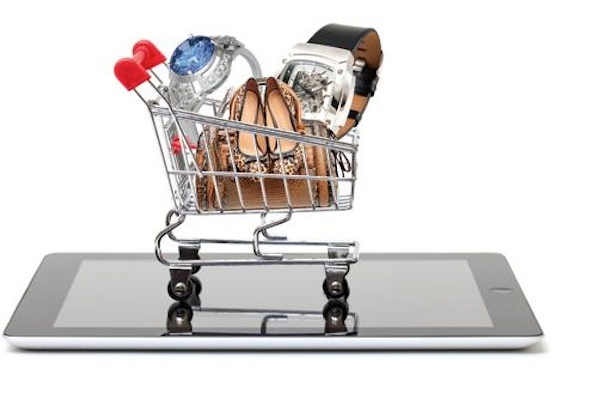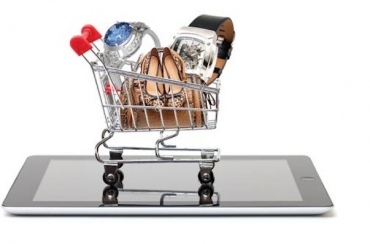

Extra spending generated by digital to double
In Contactlab and Exane BNP Paribas projections, clients with digital identities will exert an influence over half of all global sales for any brand. The contradistinction between boutiques and online stores already need no longer apply in today’s world and as we move towards the future, the success of a brand will depend ever more on its capacity to integrate its users’ digital profiles with their actions across diverse sales channels.
It is a joint study by equity research firm Exane BNP Paribas and Italy’s provider of customer engagement solutions through digital direct marketing ContactLab. This third edition of the report estimates that between today and 2020 the luxury goods market is set to grow significantly, with digital’s influence on total sales volume rising to 50%.
A transformative process is underway in the luxury industry with an entirely new paradigm emerging: digital contactability. As early as 2014 it sustained a quarter of sector turnover and is set to be a key growth driver across the industry, going on to impact 50% of revenues by 2020. Implicit in this development is the rise of e-commerce, which is predicted to increase as much as threefold on today’s size.
Over the next five years, luxury brands will get to know virtually all of their customers by name: in fact, customers who have digital identities will represent around 90% of each brand’s user base, between those who are registered users (45%) and those clients contactable through email or push notification (41%). The actions of these users will in turn influence over half of brand global sales revenues.
The development of digital assets in conjunction with the adoption of an evolved digital customer engagement strategy is crucial then to determining fashion brands’ success or loss of competitiveness. This in itself does not signify the impending obsolescence of brick and mortar stores, but rather the contradistinction between a physical presence and online sales will no longer make sense. Digital contactability is and will continue to be the key factor in unifying the physical and the digital in a relationship of mutually valuable exchange.
Today e-commerce, accounts for around 6% of global brand turnover, which is significant in itself, signifying an increase of over 50% on 2013. From here to 2020, according to diverse models, that number is set to grow to at least double and likely treble current volumes: come 2020, e-commerce is predicted to amount to 18% of total brand revenues. However, this is just the tip of the iceberg: cross-channel customers are really driving forward the market and, by increasing their own expenditure year-on-year, will progressively impact global expenditure.
“If we look at retail turnover we can see that only a quarter of it stems from digitally contactable users; the other revenue is generated by anonymous users (another quarter) and users who are registered but who cannot be contacted for one reason or another,” explained Massimo Fubini, Founder and CEO of ContactLab. Thanks to research such as this, we also know that digitally contactable users spend around 20 to 30% more both online and in-store: if brands learned to identify and make contactable this anonymous “block” it would unlock hug revenue-generating potential. To do so however one needs to use evolved digital contact tools which enable strategies of engagement and loyalty-building and allow upselling to these customers”.
The state of the art reveals a picture that is rapidly changing, where the number of customers who are registered and digitally contactable continues to rise. These consumers are high spenders both in-store (+16% compared to unregistered users) and cross-channel (+60% compared to those who only shop in-store) and whose average spend on luxury goods increases year-on-year (from 30% in 2011 to 37% in 2014).
What emerges then is a user profile that effortlessly shifts between the physical and digital and which draws few distinctions between the two areas. To distinguish themselves from the competition in the eyes of these users, brands will need to better satisfy their needs, make their lives easier and make the relationship ever more personalised. The continuing relevancy of POS will depend then on the integration of customer digital profiles with their in-store actions. Even today this is apparent in the diffusion of the ROPO (Research Online, Purchase Offline) phenomenon, practised by 60% of consumers and set to rise to 80% in Exane and ContactLab forecasts. This phenomenon should be seen as a wake up call for those brands who have not yet become fully established in or who have still to complete their penetration of the digital world: the risk is to remain on the sidelines of this highly-competitive arena.
ContactLab and Exane analysis, which looked at the market and its revenue from an integrated, multichannel perspective, hints at a doubling of forecast revenues generated by users whose have a digital identity. In particular, the extra spending directly attributable to digital customers in 2020 will impact approximately 15% of the turnover of luxury firms, coming from 5% of customers in-store, 6% of online customers and 3% of cross channel customers.
“Given the disruptive impact of digital evolution for luxury companies”, explained Marco Pozzi, Senior Advisor to ContactLab, “digital strategy should increasingly be guided by senior management with implications across the rest of the organization and also on revenue, profit attribution by channel and on the logics governing the reallocation of marketing budget from offline to digital”.
To realize these projections, three different methodologies were employed: two based on linear regression (singular and multiple) and the third on a Gaussian curve. Whichever way one analyzes the market, the penetration of e-commerce and the impact of digital are on the rise.
“To say that luxury markets will be responsible for an increasing percentage of growth is rather common. What’s less common, and more precise, is to say that the entire luxury industry is radically shifting as happened in the past with the travel and Financial Services compartments. – says Luca Solca, managing director Equities Sector Head – Luxury Goods di Exane BNP Paribas. Physical points of sale will remain fundamental and indisputable assets, however, development and adoption of digital competencies will be a necessary condition for brand survival.”
Such is the work of ContactLab and Exane as they continue development of the Digital Competitive Map, a proprietary tool which uses 66 quantitative parameters to measure a brand’s capacity to engage its users, providing a comparison with other sector players.
Source:Econsultancy
